- Home
- Consciousness
- Nature of consciousness
The Nature of Consciousness
The nature of consciousness is to create meaning in life and expand it towards contentment, happiness and joy.
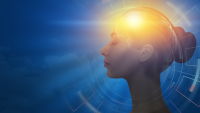 Consciousness as a Light in the Head,
190235415 © Prostockstudio | Dreamstime.com
Consciousness as a Light in the Head,
190235415 © Prostockstudio | Dreamstime.comConsciousness, knowledge, experience and life
The nature of consciousness is to know.
Consciousness creates meaning by creating structures of knowledge in which the inner person ("me") is related to an objective aspect of the world. That objective aspect can be an outer aspect of myself (such as my body), some aspect of another person or a part of the physical or cultural environment.
Everyone's consciousness continuously creates and recreates many different structures of knowledge. Knowledge is like a light from inside which illuminates the world with meaning.
All knowledge is structured in consciousness. It may be recorded in symbolic form in books or libraries but real knowledge is always live and personal, embedded in the awareness of the person who knows. Your knowledge is yours alone, even though a teacher may have helped you create it. Hence, the meaning of your life is unique to you.
Experience is a kind of direct knowledge gained through perception. Knowledge is extracted from experience and prior knowledge is necessary to give meaning to current experience.
Knowledge and experience go hand in hand in expanding the meaning of life.
Without consciousness, there is no knowledge and without knowledge there is no meaningful experience. Without meaningful experience there is no happiness, achievement or evolution towards higher states of being. Without consciousness there can be no sense of fulfilment.
Indeed, it could be said that without consciousness there is no life. The nature of consciousness is therefore the nature of life itself.
Consciousness and the 5 worlds
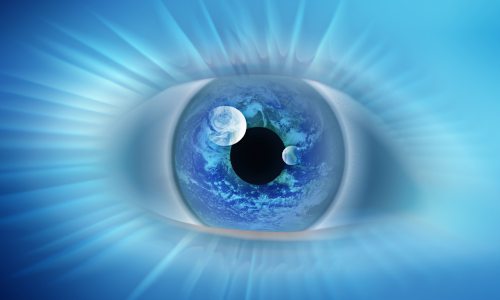 One eye, five worlds; ID 595847 © Kts | Dreamstime.com
One eye, five worlds; ID 595847 © Kts | Dreamstime.comThe nature of consciousness creates knowledge of different worlds. There are five distinctly different worlds of human experience:
- the shared physical world that lies outside our minds and which is occupied by our bodies; knowledge of the physical world is gained through action, experience and through social and cultural exchanges.
- the private mental and emotional world which is individual and unique to each of us; direct knowledge of the mental world is gained through introspection.
- the shared social and cultural world which provides us collectively with a meaningful basis for human existence; knowledge of the social & cultural world is gained through relevant social and cultural interactions which begin when we are born and continue as we grow, through periods of socialization, education and training.
- the world of transcendental Being found at the source of individual existence; direct knowledge of the transcendental world is gained through Transcendental Meditation.
- the world of enlightened living in which the full meaning of life is expressed. Knowledge and realisation of the world of enlightened living is gained by integrating knowledge and experience across the first four worlds, by living life to the full.
The nature of consciousness works to express and fulfill our desires as we progress through life, leading us to gain experience and knowledge of all five worlds.
Consciousness, the One and the Many
 One Sun creates many images; ID 109858025 © strannick_fox | Adobe.com
One Sun creates many images; ID 109858025 © strannick_fox | Adobe.comThe nature of consciousness is to create meaningful relationships of knowledge between the one and the many.
On the individual level of existence, "the one" is "me" or "I", the individual self. I am the one who knows, the one who acts, the one who experiences. I am at the centre of my own life and the one who lives within my body. I exist as a single person at the inner, subjective end of my own experience.
For me, "the many" are the diverse others with whom I interact. Of course, for me to be able to interact with these others, there must also exist a shared world with objectively perceivable features. The shared world provides a physical context within which I can experience the many.
The shared world with its many other beings and objective features lies at the opposite, outer end of my own experience. The structure of knowledge carried within the field of my own individual consciousness creates meaningful relationships between these two opposite ends of life, inner and outer.
On the cosmic level, the abstract state of absolute Being, the absolutely orderly state of pure existence, is related to the personal experiences of all created beings through the singularity of pure wakefulness, a state of pure cosmic consciousness that transcends and underpins everyone's unique individual experience.
The cosmic level of Being is indivisible and the same for all, even though it reflects through the bodies of countless individuals to give the appearance of many.
However else God might experience the created worlds, God - the One Cosmic Being - simultaneously knows each of us who make up the cosmic many, perfectly and completely, from the inside.
The nature of consciousness and the structure of knowledge
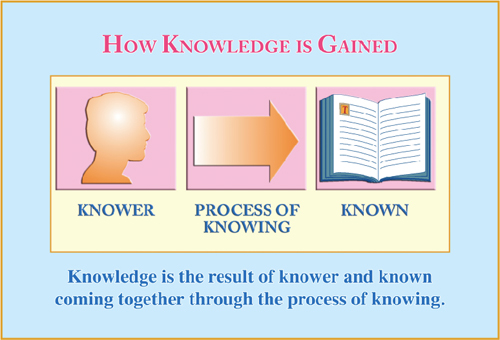
The nature of consciousness is to know. Consciousness can therefore be described in terms of knowledge.
Knowledge has a threefold structure: knower, knowing and known. The subject ("I") connects with an object ("you") via a personalised process of knowing (I see, I hear, I remember, I understand, etc.)
The process of knowing requires senses for experience (sight, hearing, touch, smell, taste, spatial and temporal awareness etc.), organs of action for creative expression (voice, hands, fingers, feet etc), memory and imagination to create meaning and an intelligent mind to connect it all together.
All three parts of the structure of knowledge - knower, knowing and known - are embedded within the consciousness of the knower. Consequently, the existence of objects external to the perceiving mind is an assumption only.
Our belief in the independent existence of physical objects is a culturally determined one. Does the Moon continue to exist if no-one is looking at it? Who can say? Yet the fact that we can find it exactly where we expect it to be, if and when we do look, tends to convince us that it has a continuity of existence in the form that we remember.
There may, however, be other valid ways of thinking about the real nature of physical objects when they are not being directly perceived - as is required for particles in quantum physics. Quantum particles display measurable characteristics only when being measured. Otherwise, they exist as a fuzzy combination of all possible characteristics.
The nature of consciousness and the knower - the subject, the self, the "I"
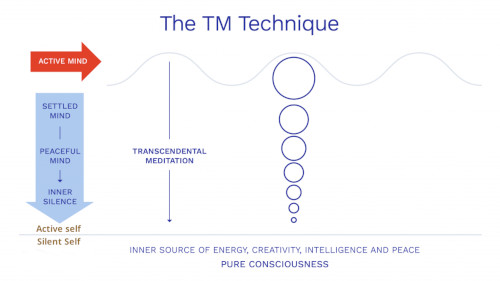
The nature of consciousness is reflected in the nature of the mind. We can think of the mind as the organ of knowledge and it has depth like an ocean. The mind is active at its surface and silent in its depths, with layers of dynamic subtlety in between.
The surface of the mind connects with the brain and body so that the activity of the mind is reflected in the activity of the body. Hence, consciousness can be studied scientifically, from the outside.
However, the depths of the mind connect with the eternally awake and cosmic level of pure consciousness, the singularity of pure wakefulness at the source of thought. This is a transcendental level of life often hidden from our inner, individual, view by the clouding effects of stressful experience and by our desire to be constantly engaged in meaningful activity (which directs our attention to the outside).
The direct realisation of the existence of this transcendental level of life (i.e. on the level of experience) requires mental purity, clarity and inner silence. Cultivating these qualities demands a period of relevant education and training. This is the original purpose of Yoga.
Transcendental Meditation is a pure form of Yoga for such Self-realisation. It is easy and enjoyable to learn and practice and is suitable for people busy in the world.
At the root of all knowledge and experience is the active self, the one who knows and experiences. In my own mind, it is "me".
Transcendental to my active self - the one who knows - is the silent self - the one who is. "I know" is based on "I am". I think because I exist.
By expanding the conscious capacity of my mind through Transcendental Meditation, I can consciously yoke the active part of myself to the often hidden silent part, creating stability and bringing a spiritual depth to all active experience.
This is how Transcendental Meditation works to expand the meaning of life, one person at a time.
The nature of consciousness and the object of knowledge
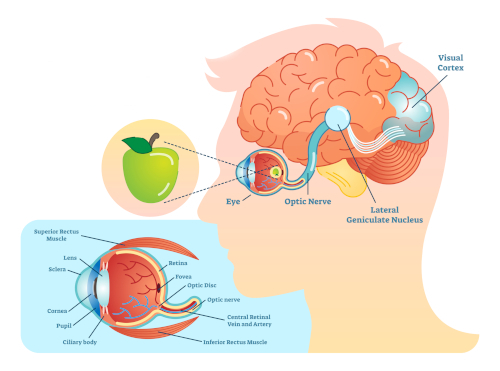 How the eye works; ID 108512838 © VectorMine | Dreamstime.com
How the eye works; ID 108512838 © VectorMine | Dreamstime.comThe nature of consciousness is not only to structure knowledge, but also to allow for the growth in the quality of knowing.
When I see an apple, my eye first of all makes a small upside down real image of it on my retina, at the back of my eyeball. Nerves communicate the qualities of this physical image to my brain which then, somehow, converts it into a mental image, complete with associated memories, feelings and thoughts.
In this trick of conversion, my senses, acting with my mind, my memory and my imagination, transform what we all believe to be a real physical object (the apple) into a mental object held in my awareness. Through this trick I perceive the apple and know it exists in our shared world.
In this act of perception, the mental image created within my consciousness becomes intimately bound up with my active self to create a deep relationship of meaning between me and the object (in this case, the apple).
Creative intelligence and the nature of consciousness
 Creative intelligence at work; ID 96149603 © Convisum | Dreamstime.com
Creative intelligence at work; ID 96149603 © Convisum | Dreamstime.comThe nature of consciousness can be defined in terms of creative intelligence.
Creativity is the spur to the expression of life. It springs from inside, from the very nature of consciousness. It leads us to think, to speak, to act.
Continuous acts of creation expand the initial impulse of life to express itself, creating successive layers of experience, knowledge, achievement and satisfaction.
Intelligence enhances the meaning of life by guiding the expanding creative expressions towards the fulfilment of an inner sense of purpose.
As individual life forms interact with each other and their environments, circumstances change, requiring intelligent adjustments in response to those interactions, to keep life flowing in a purposeful direction.
Through memory, experience, the development of knowledge and the ability to reflect and learn, the intelligent nature of consciousness keeps life flowing in the direction of enhanced meaning.
Creative intelligence is therefore the ability of consciousness to both structure knowledge and experience and to allow those structures to change and to grow, to develop meaning in life.
On bondage and liberation
Knowledge and experience are essential to life and they are structured in awareness due to the active nature of consciousness and its capacity to perceive.
Yet, through the process of perception, my active self gets intimately bound up with the object and I become identified with it, losing my independent status. In the resulting experience, my self becomes limited by the object. This condition is called bondage to experience.
In yoga terms, this process of bondage to experience is considered to be a loss of life which diminishes enjoyment and prevents the development of full human potential.
Identification through perception is essential for meaning, There is a way, however, to perceive, to know, to experience, without creating such self-limiting bondage to objects.
By cleverly applying the nature of consciousness through the techniques of "yoga", one can first awaken the silent basis of the mind within individual consciousness. "Yoking" the silent and dynamic aspects of self together through further practice results in a naturally alert and integrated state of consciousness in which the mind remains silent and self-aware at its basis at all times, even during the most intense activity of everyday experience.
The process of experience is thus allowed to convey the maximum meaning without disturbing the self-sufficient, silent and orderly basis to individual life.
This mature state of Yoga is called cosmic consciousness, the state of liberation from bondage.
According to Maharishi, cosmic consciousness is an essential milestone on the path to enjoying the full meaning of life in the world of enlightened living. Everyone should have the training to develop this state.
The Science of Creative Intelligence - exploring the nature of consciousness, both objectively and subjectively
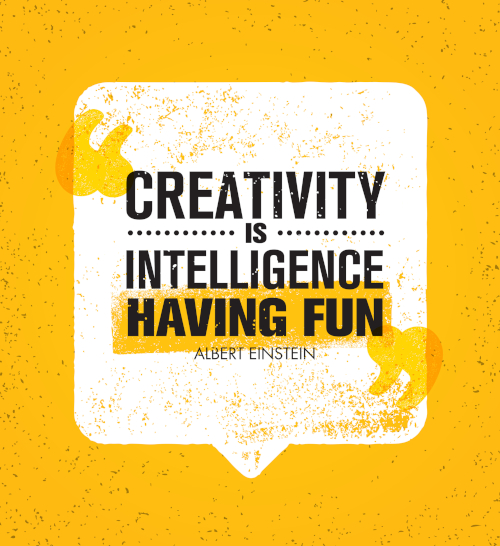 Einstein on creative intelligence; ID 85927964 © Roman Doroshenko | Dreamstime.com
Einstein on creative intelligence; ID 85927964 © Roman Doroshenko | Dreamstime.comMaharishi defined creative intelligence as "that impelling force which continually gives rise to new expressions of life and order..."
He also said that creative intelligence is "progressive and evolutionary in nature."
In 1972, on the basis that regular practice of Transcendental Meditation produces scientifically measurable changes in physiology, he defined a new science - SCI, the Science of Creative Intelligence - to bring complete knowledge of the nature of consciousness to light.
SCI combines the scientific knowledge of our time - for example knowledge about the human brain and knowledge about the structure of the physical world - with the ancient knowledge of the nature of consciousness as carried in the Vedic tradition. Using this approach, he developed courses to bring "enlightenment to every individual and invincibility to every nation".
SCI combines knowledge gained from both inside and outside. The objective, outer approach of modern science is combined with the subjective, inner approach of systematically exploring the nature of one's own consciousness via Transcendental Meditation and its advanced techniques.
The principles of SCI as described by Maharishi are applied throughout this site to bring you a clear understanding of your own human potential.